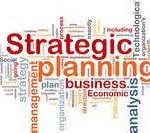By Denise Harrison, President, Spex, Inc.
“Get big fast or go home!” was the mantra of venture capitalists. Webvan spent $830 million to expand into 26 cities at once only to file for bankruptcy after its overly ambitious strategy failed. E*Toys had a market capitalization greater than that of ToysRUs its first day of trading. Greed, irrational exuberance, call it what you may, but common sense was not part of the tune. Good business strategy is based on market knowledge and strategic focus – focus on what you do best and in areas where your competitors are weak.
In recent years many companies saw the Internet expansion as a key trend to enhance growth. Pundits argued that the new economy was immune to business cycles. Webvan embodied growth mantra – to what end?
“Webvan Group, Inc. said it shut down its online grocery-delivery service and will file for Chapter 11, marking one of the most spectacular and expensive failures of the Internet era. Webvan poured $830 million into high technology warehouse facilities and a 26-city expansion plan that most observers have since said was too ambitious.”
The Wall Street Journal, July 10, 2001
This is only one example of how companies assumed the Internet was the “land of opportunity,” pouring millions of dollars into plans that were ill conceived and based on invalid business models.
During this dot.com boom, Intelligent Information Systems (IIS), Durham, NC, a software-consulting firm, evaluated variety of potential growth strategies. IIS was clearly differentiated by its high quality standards and its commitment to total customer satisfaction. To many companies, “quality” and “total customer satisfaction”, are just buzzwords, but to the team at IIS these phrases are driving principles. While many technology firms in the Research Triangle Park were taking advantage of the lucrative public offerings, the senior management team at IIS knew that a public offering would cause the company to lose its focus on customer satisfaction and zero defects. After a public offering, associates would be imagining what they could do with their newfound wealth, watching the stock price daily, hourly, assessing minute-to-minute their net worth. This myopic self-interest would cause the company to lose its competitive advantage.
They had a difficult decision to make during a critical time frame, but 20/20 hindsight shows that the IIS management team chose the optimal direction and course for their firm by focusing on the key areas that set the company apart from the competition.
eBay is another company that turned down easy cash as it focused on its long-term success. It focused on its customers, the sellers of products on eBay’s online auction site. As traffic grew on the site, advertisers asked eBay to participate in lucrative advertising contracts. Short term, these contracts would have significantly enhanced eBay’s revenue and profitability. However, when the sellers on eBay’s site complained about competition from the advertisers, eBay reduced the advertising on the site. eBay focused on the customers who had made it successful to date. If these customers had not remained loyal and had jumped ship to try other auction sites, competitors would have been more successful at competing against eBay.
As eBay expanded, large companies looked to it as a distribution channel, sometimes to unload excess inventory, sometimes simply to have another sales channel. To protect its original customer group, eBay does not offer volume deals or special deals to these large companies. Everyone must play by the same rules. While some of eBay’s original participants feel threatened by the new, larger companies selling through the site, many think that the added participation will drive more traffic to the site, enlarging the overall customer base for all participants’ products.
Historical Examples
Many East Coast readers fondly remember Piedmont Airlines. When airline deregulation looked Piedmont in the face, Piedmont knew that in this new competitive environment they would face challenges from larger, better-financed airlines. How could they compete?
Larger airlines chose to compete in the busiest airports. This head-to-head competition led to inevitable price wars. Piedmont, on the other hand, continued to build its network in the Southeast servicing many airports that other airlines would not even consider. Their strategy paid off as the company was voted “Best Airline,” clearly differentiating itself as the high quality service provider in the industry. Next, US Airways purchased them, and you know the rest of the story!
Market trends are some of the key factors to look at when developing a strategic plan. But in addition to studying the market’s attractiveness, a company must also look inside to assess its own strengths and weaknesses. Compete on strengths and avoid areas of weakness. All of the airlines developed their respective strategies by evaluating the markets, looking at demographics and transportation trends. But Piedmont also chose to avoid competing with better-financed airlines in popular hubs. Instead, it decided to service the area where it was already well established, an area that was less attractive to its larger competitors.
Southwest – yes, another airline story-noted the hub-and-spoke configurations of the major airlines and decided to compete with a no frills, point-to-point service. They targeted the “no frills” traveler in every route they flew-no seat assignments, no first class, no food (well, okay, peanuts) just cheap, efficient service. They developed their model to keep costs low, using only one type of aircraft to maintain, one type of plane on which to train their pilots and flight attendants. Did this service appeal to all travelers? No, of course not, but Southwest excelled at providing low-cost service for the cost-sensitive flyer. Have they been successful? Yes, they are consistently profitable, often the most profitable airline in the industry.
Alamo Rental Car identified the budget-sensitive traveler in the rental car industry. Hertz, Avis, and National were focused on the business traveler who was willing to pay for the convenience of on site rental. Alamo saw people paying for rental cars out of their own pockets while on vacation and determined that many non-business renters were willing to trade the convenience of on-site rental for lower cost off-site rental. Here again, another success story unfolds because a company looked at the market and created new ways to serve customers whose needs were not met by current suppliers.
Don’t follow the leader!
Enron began as a natural gas company. It saw the deregulation of energy markets as the path to future growth. As it pursued this growth, it transformed itself from its roots, natural gas, becoming an energy trading company to meet the market challenges of the deregulated environment. From trading in energy futures it jumped into paper, water (although not for long), weather futures, and finally into broadband. Enron could do no wrong in the eyes of many analysts and its corporate executives. Let’s look at the history.
Enron’s foray into trading began with hedging future energy costs to combat a turbulent energy market. The company needed to lower its exposure to fluctuating energy prices by entering the market to hedge the forward price of energy. This tactic not only lowered risk, but also generated a significant amount of cash with little capital investment-a very attractive results for the capital-intensive energy company. Enron jumped into the trading business with both feet, eventually resembling a financial institution more than an energy producer. The company’s rapid growth was the envy of the industry, the envy of Wall Street growing from $4.6 billion to over $100 billion, the seventh largest company on the Fortune 500 list (2001). For six year’s running it was voted the “Most Innovative” among Fortune’s “Most Admired” companies list.
Now, let’s think about this. Moving from energy producer to a trader of energy is a jump, but sometimes a jump to an adjacent competency is required when an industry is in transition, as the energy industry is in the new deregulated environment. But to assume that this new-found trading competency transcends industry/commodity knowledge is a long shot at best. Enron was initially very profitable as it benefited from its “first mover” advantage, the first to try and understand the new playing field created by energy deregulation. Its success brought competition into the field; now to maintain its profit and growth, Enron not only traded in commodities previously unknown to its personnel, but also started playing financial games to mask the truth about its slowing growth and profitability. While corporate officers either did or did not understand what was going on, their greed and egos caused the demise of Enron. Sadly, Dynegy, Mirant, and Calpine tried to follow in Enron’s footsteps and found that they too had to grow through high risk and questionable financial transactions to keep up with Enron. This was a parade that one needed to be watching, not participating in.
Not all energy companies played in the Enron band. Duke Energy was often castigated for its conservative strategy at analyst meetings during the late 90s. Analysts like the wild ride that Enron was providing (at that time the ride was up). Duke Energy stuck to its guns and remained an energy company that used trading to reduce risk rather than to become a trading company of energy futures. It did not get caught up in the hype and the smoke-and-mirrors transactions of Enron fame. Now, after Enron’s collapse, Duke Energy’s balance sheet remains strong and its prospects for realistic profit and growth are good. Companies that aspired to follow Enron into ever riskier transactions find themselves in trouble:
How to find the right marching beat for your company?
Situation Analysis
First evaluate external forces: What impacts your business from the outside?
Examine your core business by describing your market segments. Market segments are groups of customers with similar needs and preferences. Write down what your customers in each segment now and what they will require in the future. Next evaluate your competition; what are their strengths and weaknesses? Where is each company’s soft underbelly? Next you need to assess trends in technology, supplier issues, economic trends, and any recent or pending changes in the regulatory environment.
Regulatory change was the catalyst that spurred all of the airlines, not only Piedmont, to revise their strategies.
Next look internally; what are your company’s strengths and weaknesses? What is the key intellectual capital that sets you apart from the competition? Again, IIS found that it was the relentless dedication to zero defects and customer satisfaction that set them apart from the competition.
Assumptions for the Future
Next look to the future; how will trends change? What will customers require? What new opportunities should you pursue to achieve your growth and profit goals? What prospects are right for you to consider, given the strengths and intellectual capital that you identified.
Careful analysis leads to focus. Focus allows you to purposefully select the best road to travel.
Strategy Development
A clearly defined strategy that optimizes the future potential of the business is the goal.
This clearly defined strategy includes answers to following:
- What are you going to do in your core businesses?
- What new opportunities will you pursue?
- What must you accomplish internally to achieve steps 1 and 2?
Developing a strategy is defining not only what the company will do, but also what it will not do. Making definitive choices is one of the most important aspects of strategic planning. Choosing the best road for your company may or may not be the road less traveled, but it will be the right road for your company. Your company’s ability to capitalize on its unique mix of assets and capabilities will give it sustainable competitive advantage in its markets.
Denise Harrison is a President of Spex, Inc. Strategic Planning and Execution. She can be reached via e-mail at Harrison@thestratplan.com.
(C) CSSP, Inc.; 2002







